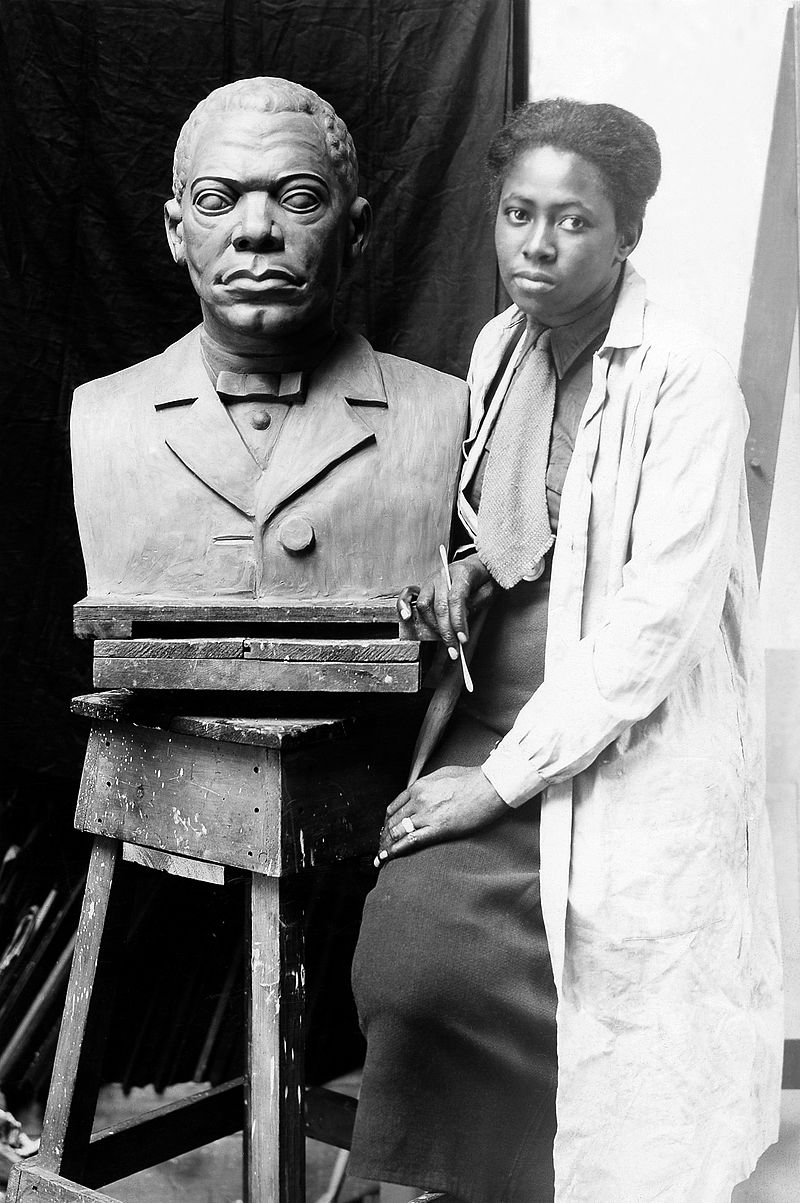 The art on American coinage – and currency in general – isn’t a subject that gets much thought from the general public. But someone composed the portraits you see on dollar bills and sculpted the faces you find on the coins collecting in jars at home, and one of those artists was from North Carolina.
The art on American coinage – and currency in general – isn’t a subject that gets much thought from the general public. But someone composed the portraits you see on dollar bills and sculpted the faces you find on the coins collecting in jars at home, and one of those artists was from North Carolina.

Burke with her portrait bust of Booker T. Washington (1935)
Selma Burke was born in Mooresville in December of 1900, the daughter of a minister who worked part-time in railroad construction. As a child she allegedly taught herself to sculpt by playing with the white clay on her parents’ farm. She graduated from Winston Salem State and moved to New York City to take work as a nurse, but she eventually transitioned to a career as a full-time artist after taking inspiration from the Harlem Renaissance.
Burke taught at the Harlem Community Arts Center, under the leadership of Augusta Savage, and was a self-described “people’s sculptor.” She was responsible for many pieces of public art, most of portraits of notable figures like Duke Ellington and Booker T. Washington. She studied sculpture in Vienna and Paris, and left Europe in 1937 after creating “Frau Keller” – a portrait of a German-Jewish woman and response to the rising power of Nazi Germany.

Burke, left, presenting her bust of Samuel Huntington (1938) to the principal of Samuel Huntington Junior High School in Jamaica, Queens
She founded two separate art schools, one in New York and one in Pittsburgh, and is perhaps best known for her bas-relief portrait of FDR, in place at the Recorder of Deeds building in Washington, D.C. She competed in a contest involving artists from across the nation to win the commission, and created the sculpture from sketches gathered during a sitting with Roosevelt at the White House.
 It was John R. Sinnock, the Chief Engraver of the United States Mint from 1888 to 1947, that created the actual design of the dime we know today, and Burke’s portrait is widely accepted to be a direct source for the face found on the coin. Sinnock denied claims that he copied the work, but the similarities are too strong to be ignored.
It was John R. Sinnock, the Chief Engraver of the United States Mint from 1888 to 1947, that created the actual design of the dime we know today, and Burke’s portrait is widely accepted to be a direct source for the face found on the coin. Sinnock denied claims that he copied the work, but the similarities are too strong to be ignored.
Selma Burke was a gifted artist, a prominent educator, an international scholar, a notable North Carolinian and treasured American. A nine-foot statue of Martin Luther King, Jr. she completed while well into her eighth decade of life is still on display in Marshall Park in Charlotte, and her work can be found in museums, schools and public places across the United States.

